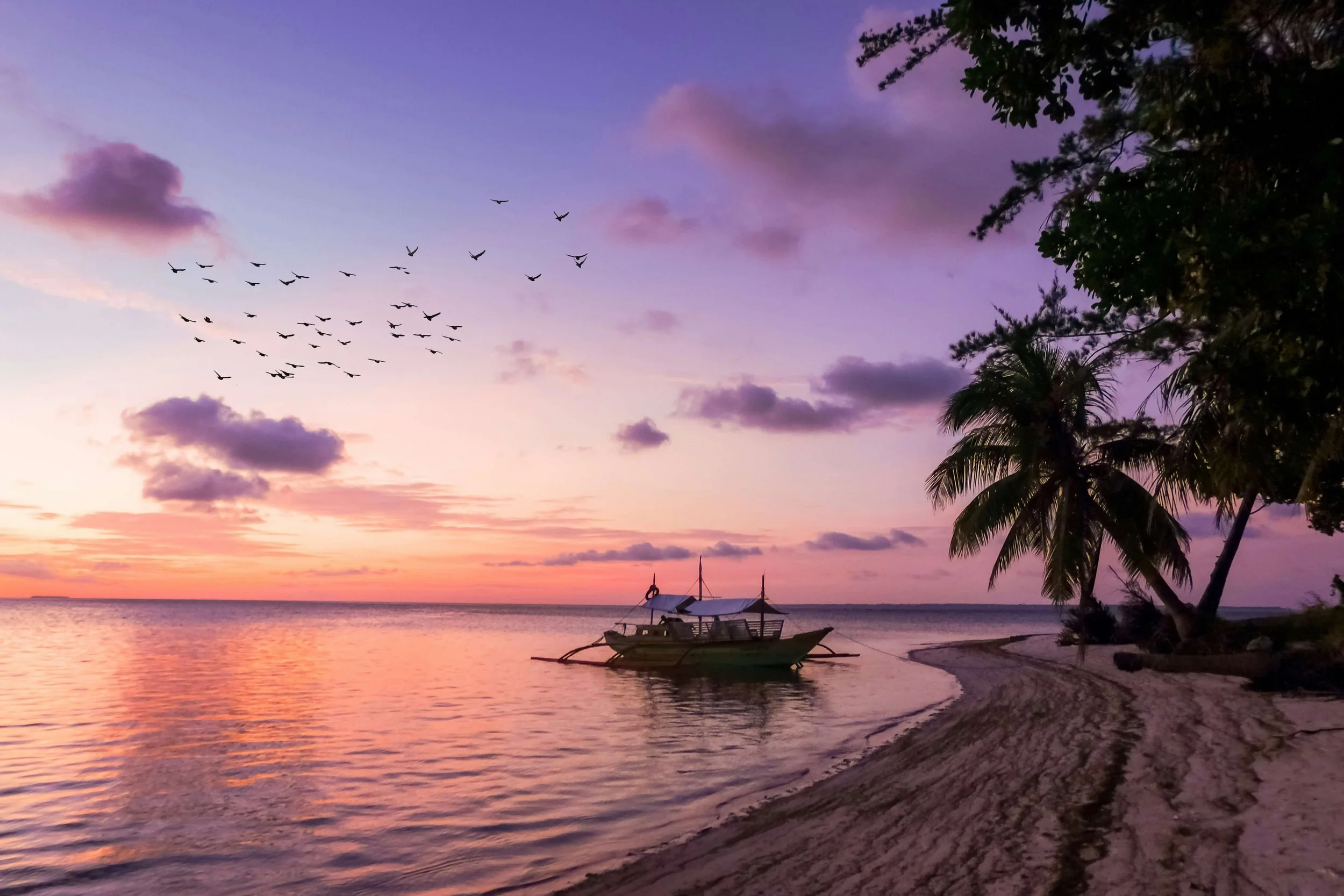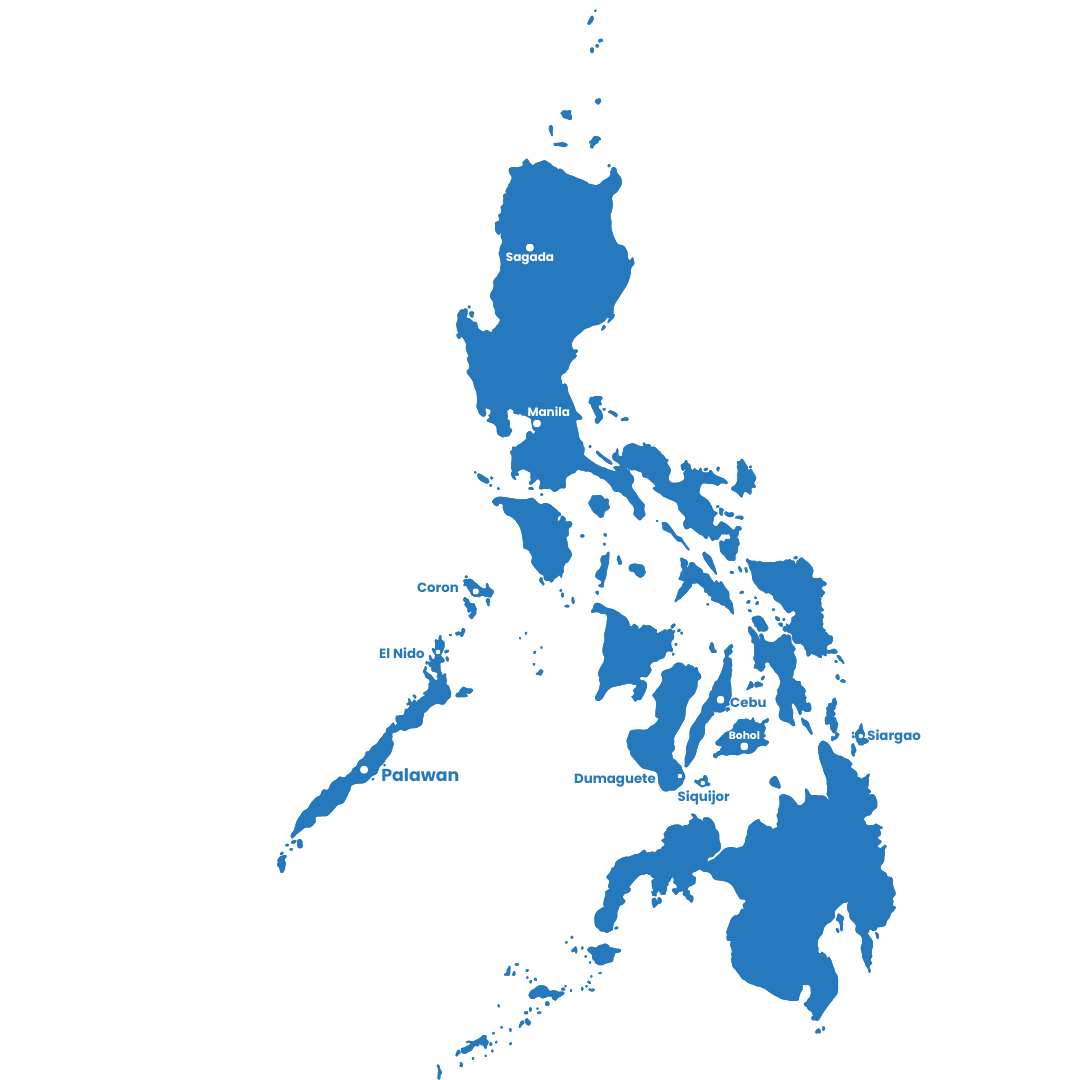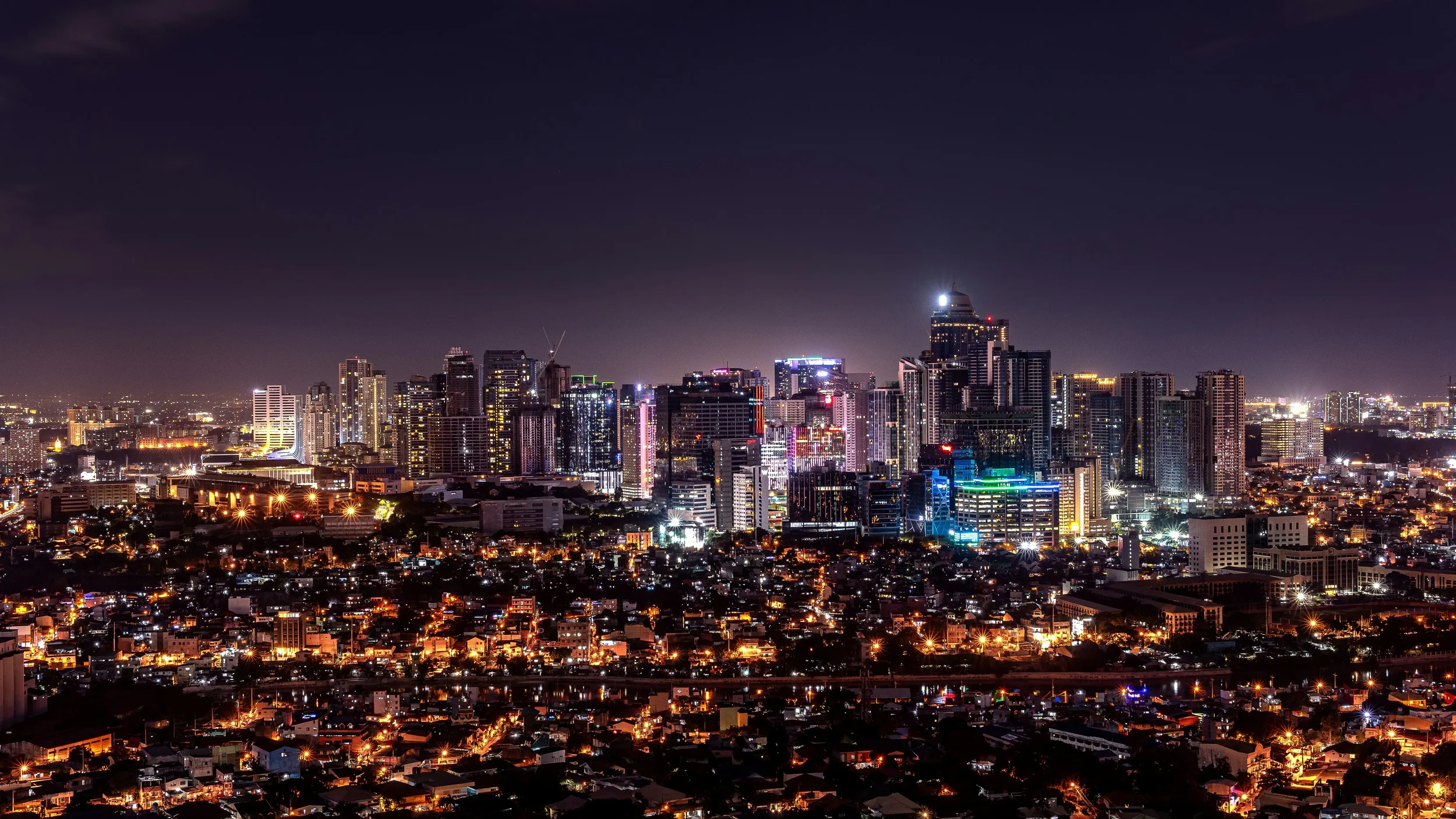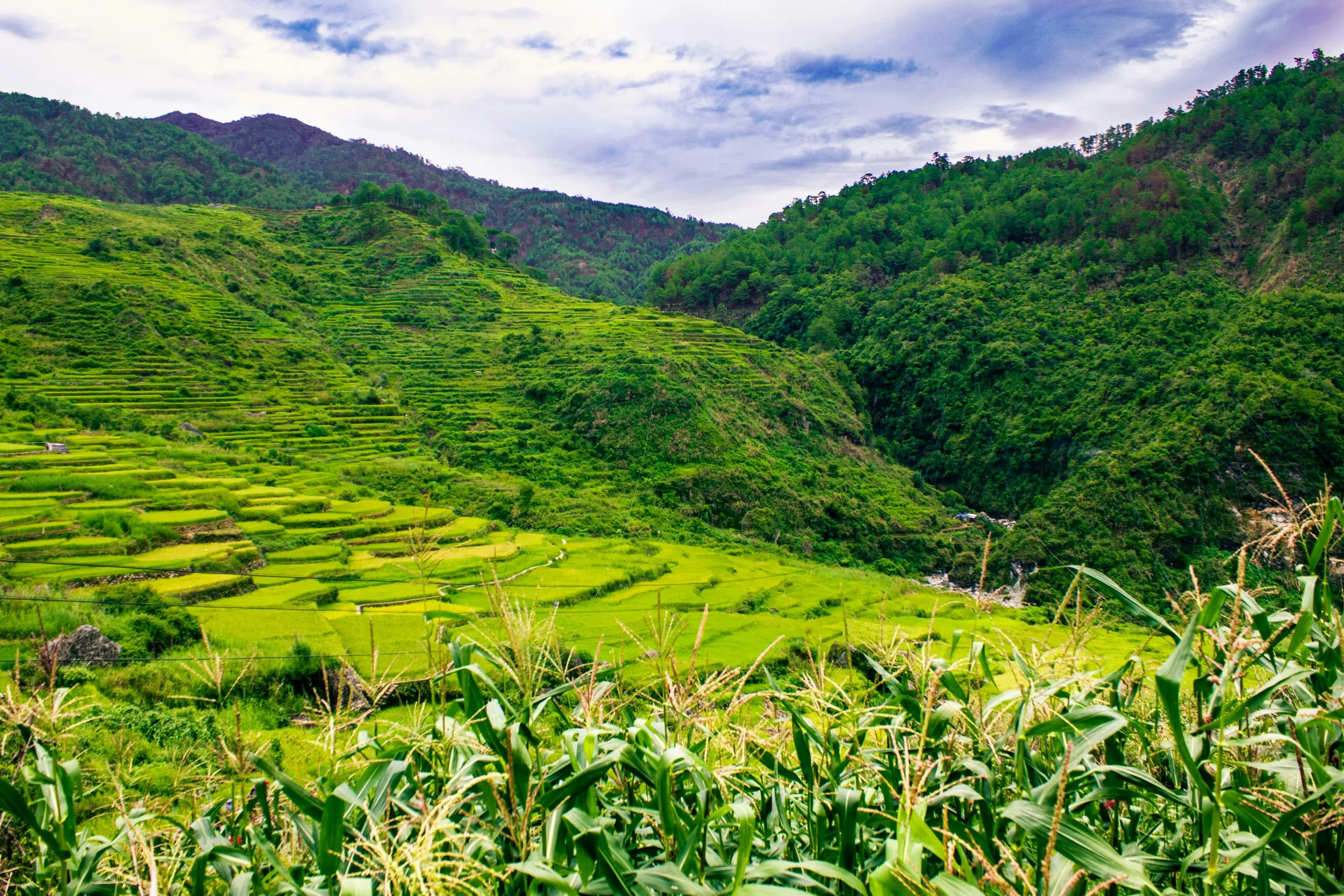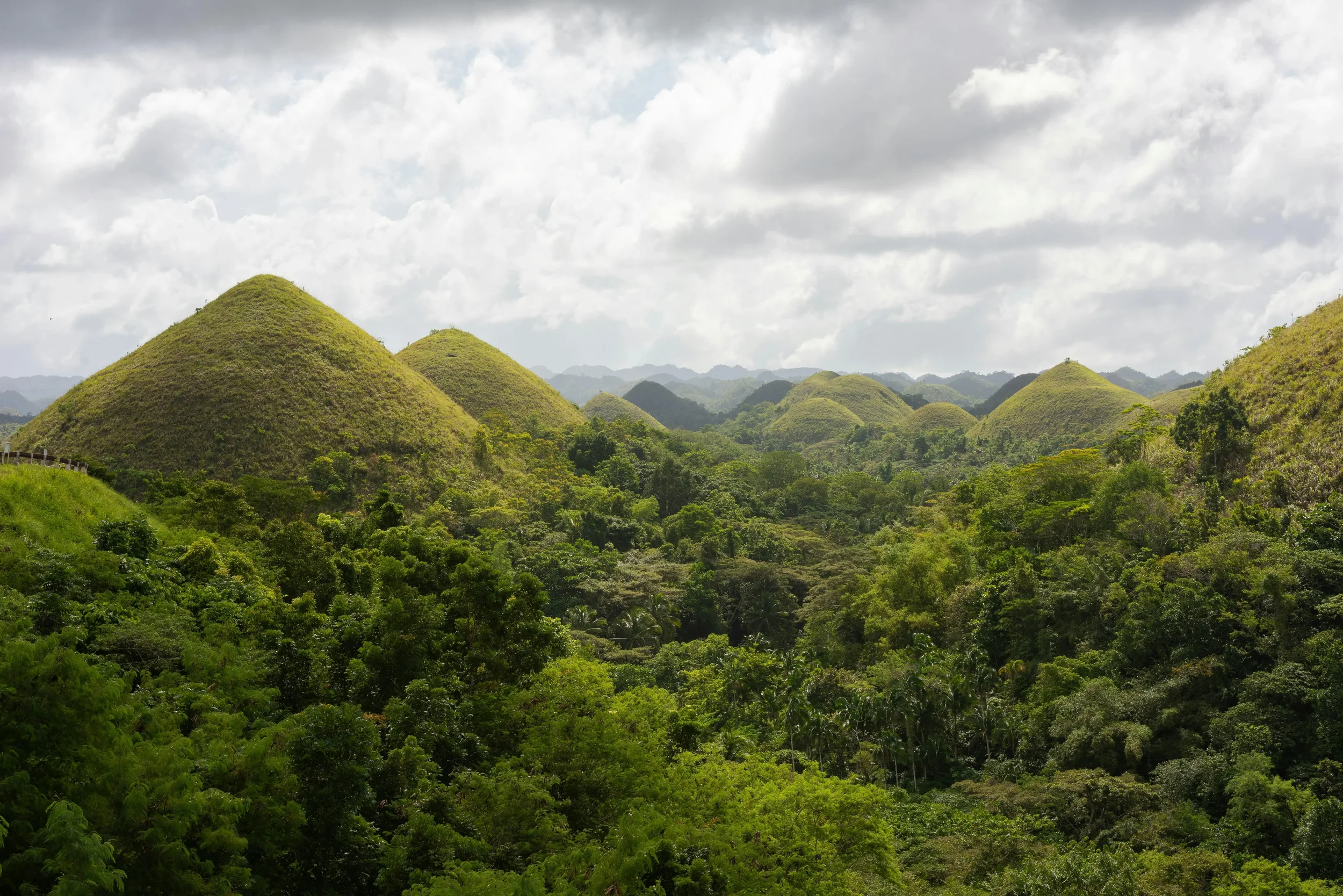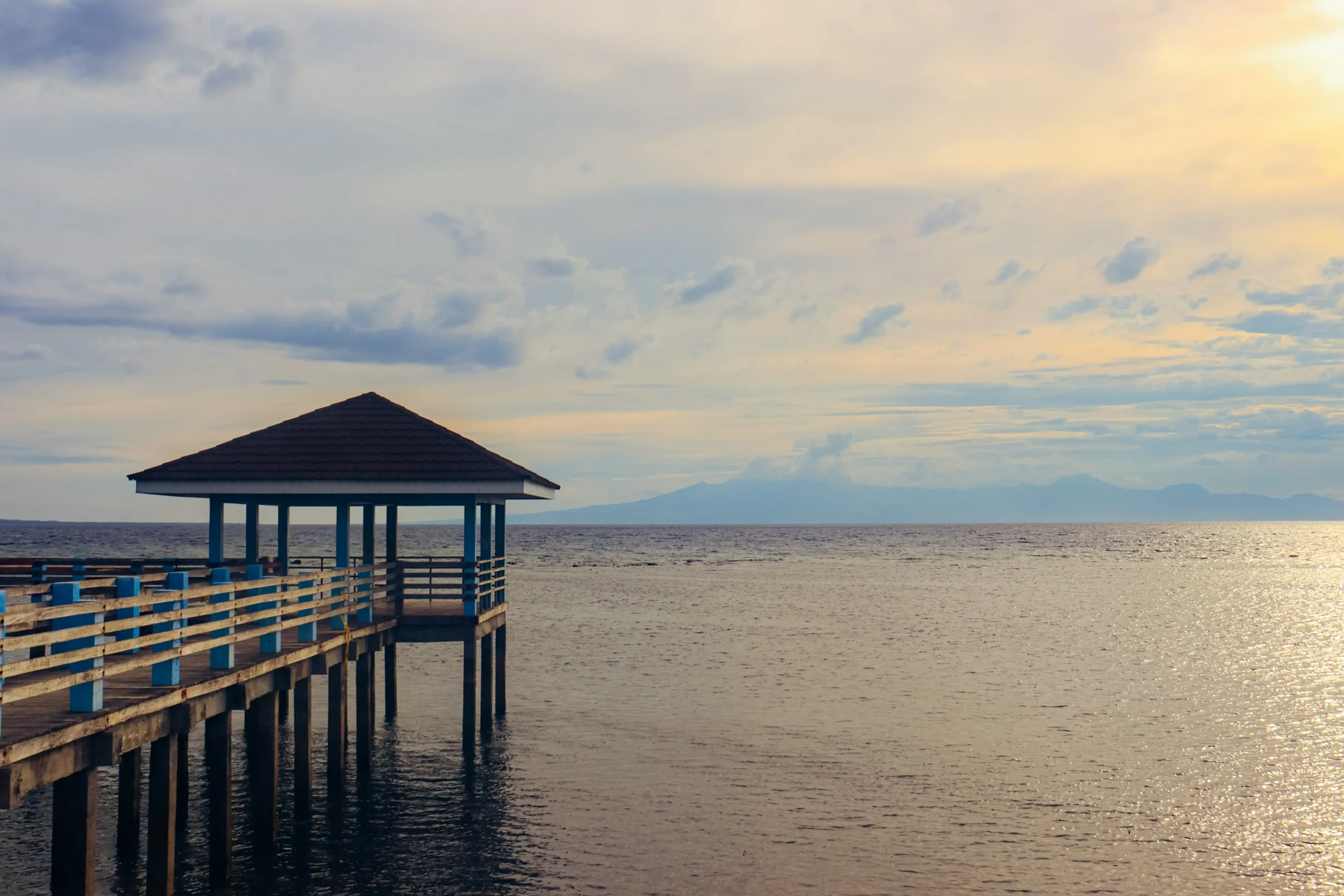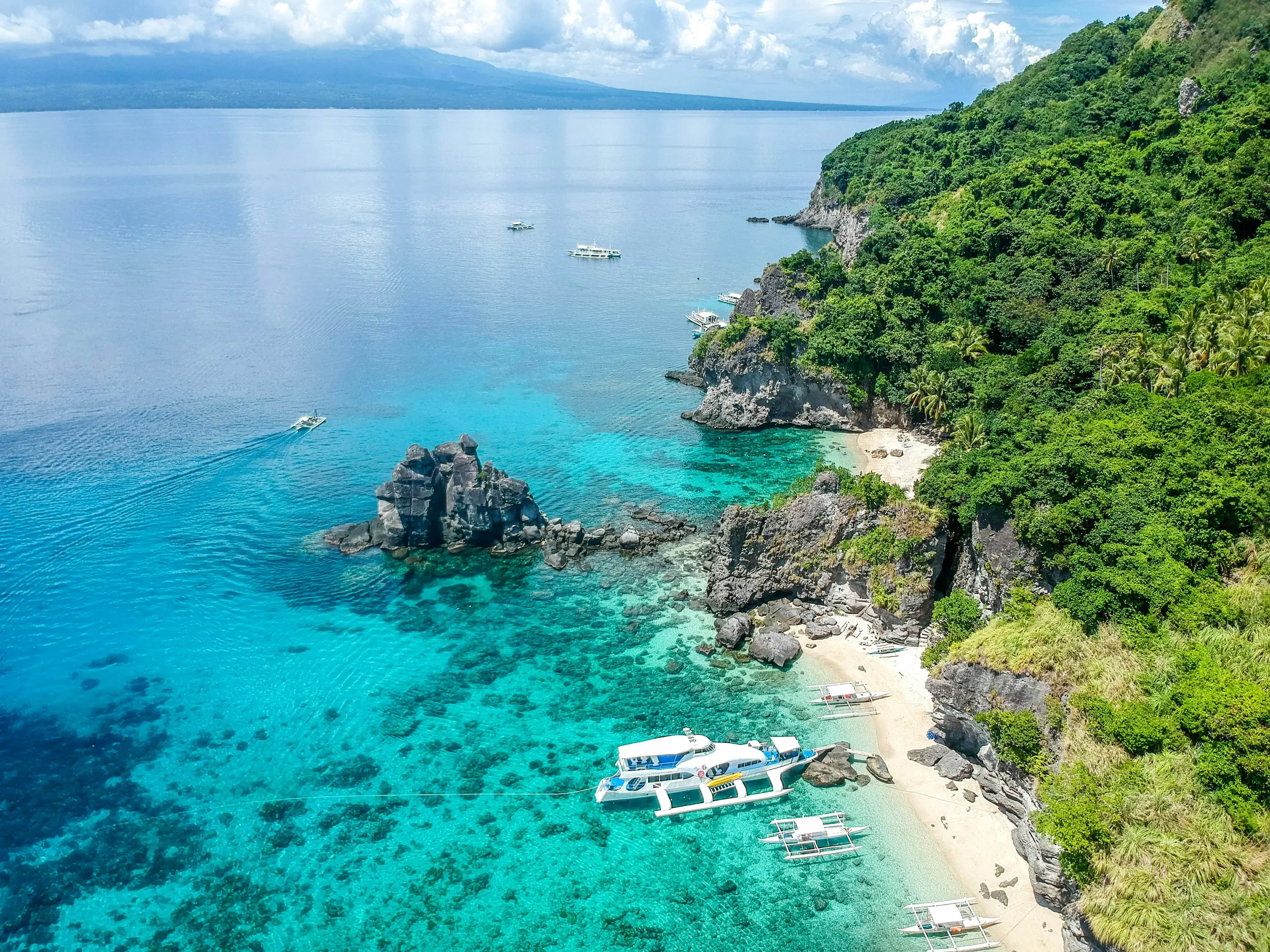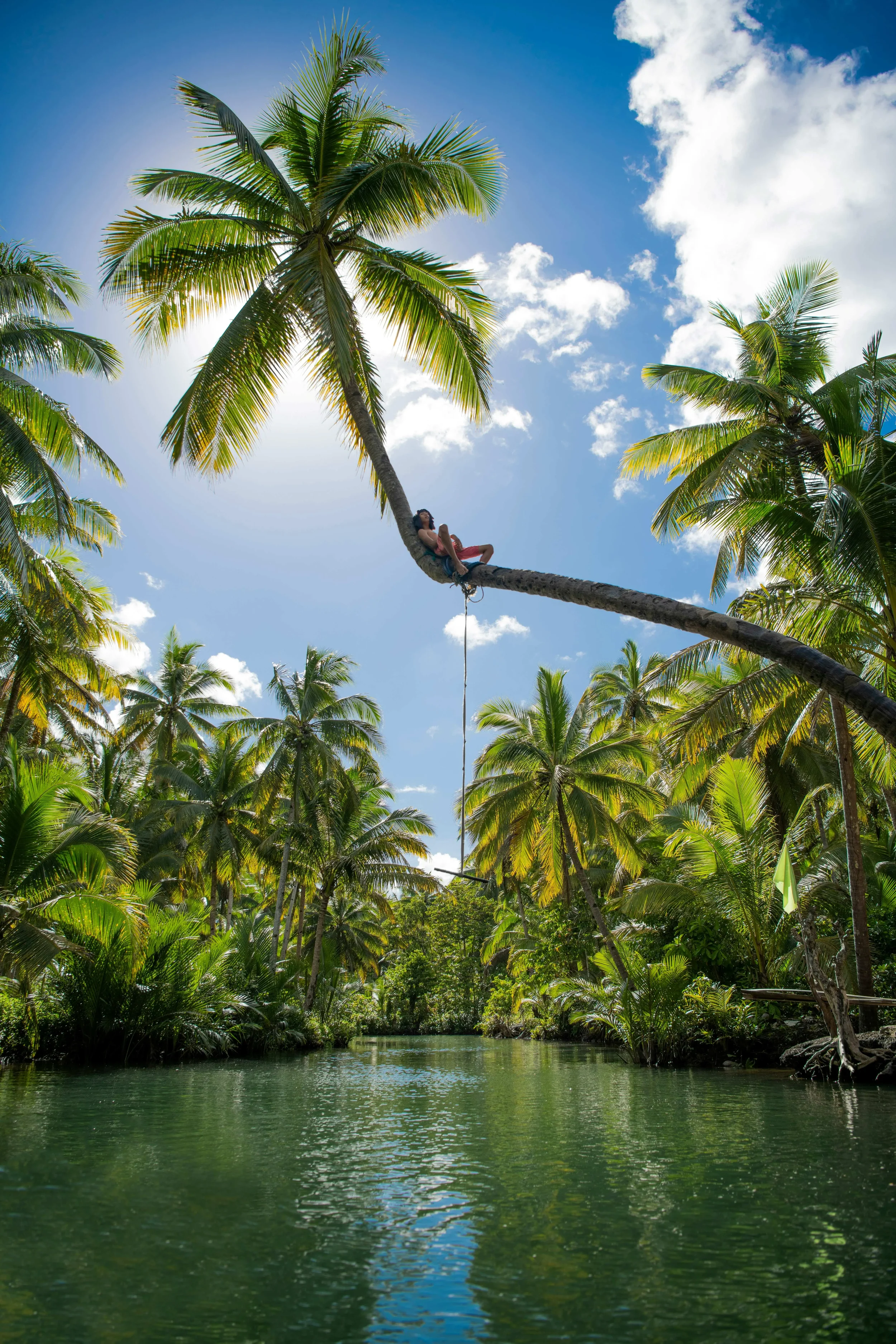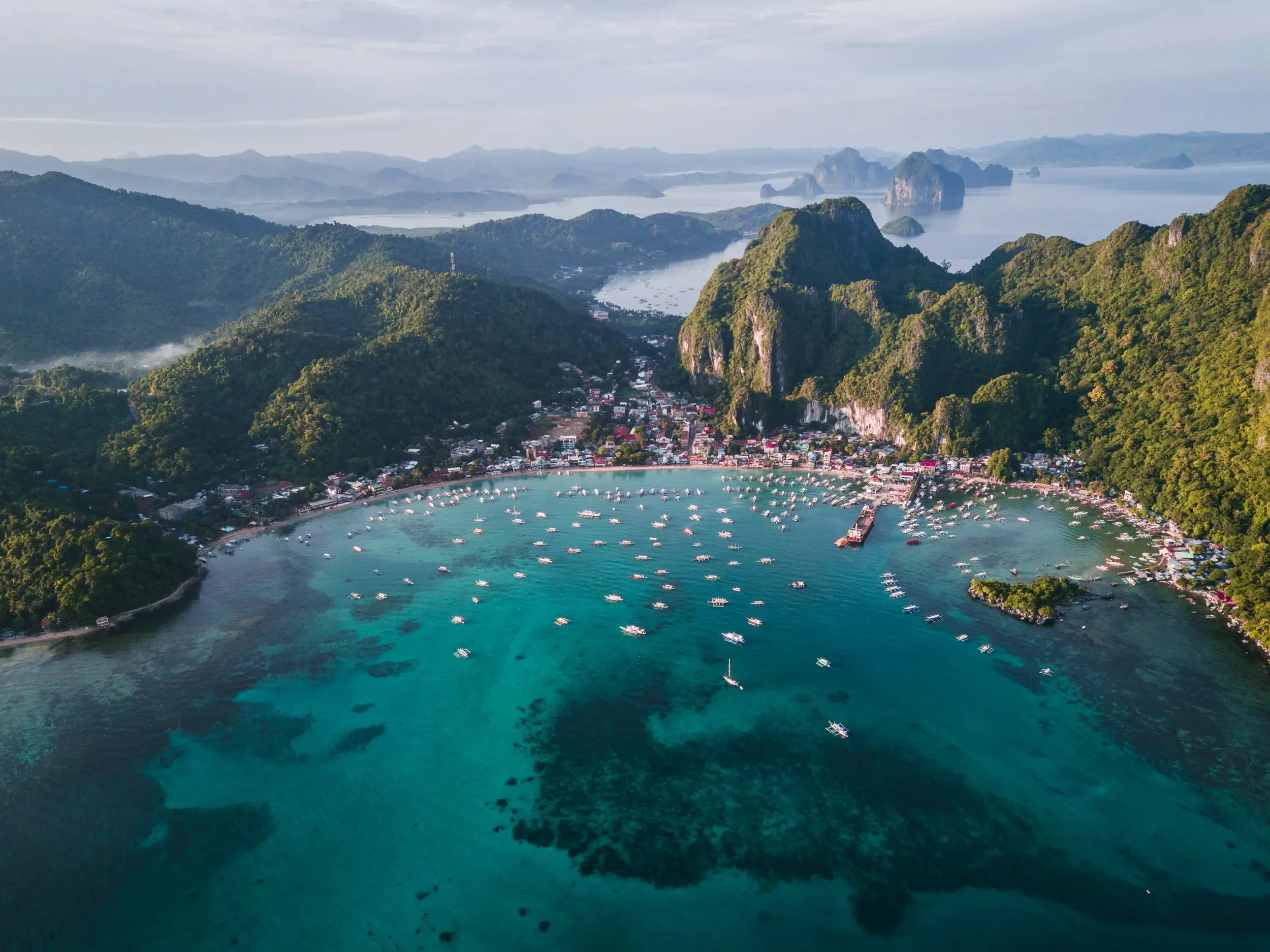THE PHILIPPINES
-
With over 7,000 islands, the Philippines is a country of scattered coastlines, boat rides, and far-flung beaches. Most travellers start in Manila or Cebu, then make their way to Palawan’s El Nido and Coron, known for limestone cliffs, still turquoise lagoons, and some of the clearest water in the country.
Siargao is the surf capital — relaxed, scenic, and still slightly under the radar. Bohol and Panglao have coral reefs, tiny tarsiers, and the Chocolate Hills — a landscape that’s unusual and almost otherworldly! For a complete change of pace, head into the mountains of Banaue and Sagada for misty treks, rice terraces carved into cliffs, and cool highland air.
Getting from place to place can be slow — ferries and domestic flights are the norm — but English is widely spoken, and it’s generally easy to figure things out on the go. It helps to travel with a loose plan and a bit of patience! But wherever you go, people tend to be friendly and welcoming, and it’s easy to feel at home.
-
The Philippines experiences a hot and humid climate year-round, but there are important seasonal variations to consider, especially concerning typhoons.
General Overview
While it's always warm in the Philippines, the period from December to February is generally considered the drier season. However, as a tropical country, rain can occur at any time of year. Given its size (over 7,000 islands!), weather can differ significantly across the archipelago. For example, the eastern part tends to be rainier, while the northern regions are often more stable and dry. It's also worth noting that May is typically the hottest month, with average temperatures around 32°C (90°F).
Seasonal Breakdown
Dry Season (November - April): This is the ideal time to visit the Philippines, particularly if you're planning to explore popular islands like Boracay, Palawan and Siargao. You can expect more sunshine and less rainfall during these months.
Rainy Season (May - October): You should be aware of the increased possibility of hurricanes and floods, especially from July to October. While not every day will be a washout, heavy rains and strong winds are more likely during this period.
-
The Philippines:
UK, EU & US passport holders:
Visa-free for 30 days.
Extension: Your stay can be extended up to 59 days from your arrival date at a local immigration office. Further extensions are possible in 1-2 month blocks, up to a total cumulative stay of 36 months for most nationalities.
What you need:
Passport Validity: Passport valid for 6+ months from your arrival date.
Onward/Return Ticket: An onward or return ticket is required in order to enter the Philippines and is frequently checked.
Good to Know:
The extension process is fairly straightforward and popular with long-term travelers and digital nomads. It's advisable to apply for an extension at least 7 days before your initial visa-free period expires.
-
Currency: Philippine Peso (PHP)
Cash is necessary for most island travel, markets, transport, and smaller hostels. Cards are only common in cities and upscale spots.Getting cash:
BDO and Bank of the Philippine Islands (BPI) have lower ATM fees (~250 PHP/$4.50).
Max ATM withdrawal is usually 10,000 PHP – so take out larger amounts when possible.
Changing money:
Bring some USD/EUR for emergencies.
Money changers in cities offer decent rates – avoid changing money in airports and tourist areas.
Typical daily backpacker budget:
₱1,000–2,000/day ($18–$36 USD) – this should cover budget rooms, island hopping and meals.Tips:
Many islands have no ATMs, so withdraw before you go (especially for places like El Nido or Siquijor).
Carry small notes – it is hard to get change for 1,000 PHP bills.
Tipping is not expected, but rounding up is appreciated.
Main Destinations

